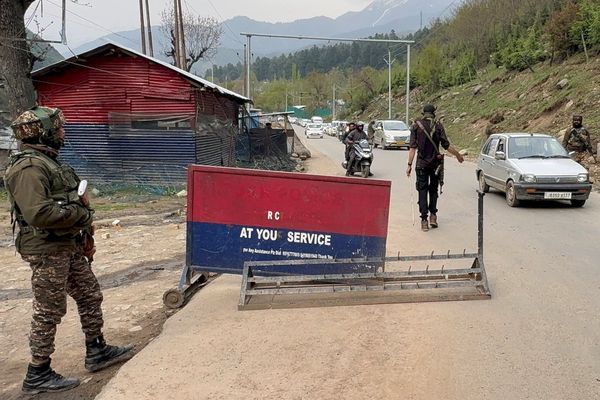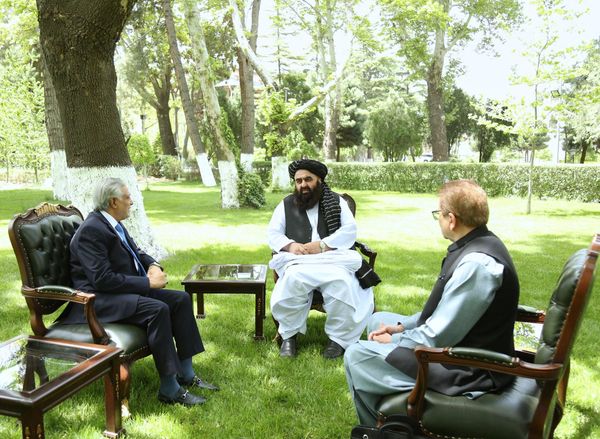
It is coming up to three months since Ralf Rangnick’s first game in charge of Manchester United and if you feel things could have gone better, the bad news is that was the easy part. This upcoming run of fixtures, between Sunday’s Manchester derby and the end of April, is far more difficult.
At least when you look at the league table, United are where they want to be, or where they can best hope to finish. Fourth place is not the “ultimate objective”, as football director John Murtough was at pains to point out at last week’s fans’ forum, but it is the ceiling on their aspirations this season.
There is reason to believe that they could stay there, meet the minimum expectation and qualify for the Champions League. Results have not been quite as bad as the general perception would suggest. United have only lost one of their 13 league games under Rangnick. They are no longer in the tailspin of Ole Gunnar Solskjaer’s final weeks in charge.
But it is draws, rather than defeats, which are undermining their chances of achieving a top-four finish. There have been five of them under Rangnick in the league, with last weekend’s against a poor and limited Watford side the latest. These stalemates mean that their grip on fourth place is far from firm.
Arsenal are two points behind, Tottenham are five back. Both have games in hand. The true state of play is complicated by postponements – the north London derby at White Hart Lane, originally meant to be played in mid-January, still needs to be rescheduled – but United’s position can be summed up in a sentence: they are not in control of their own destiny.
By now, you might have hoped they would be. The timing of Solskjaer’s dismissal was questioned – it could have come much, much earlier – but it had a clear benefit, giving his interim replacement a stretch of favourable fixtures lasting from the start of December right up until last weekend.
There was confidence among Old Trafford officials that results would improve in line with the schedule easing. They did. A return of 26 points from a possible 39 is not bad – two points per game in fact, which is top-four pace across the whole season. But given the standard of opposition, United might look back and feel short-changed.
Since Rangnick’s first game in charge, only three of United’s 13 league opponents were in the top half at the time of their meeting. The first of those, against Wolves, ended in defeat. The other two were victories over West Ham and Brighton, the first won late, the second against 10 men. Neither were especially convincing performances.
What’s more concerning, though, is the amount of points dropped against opponents United would expect to beat. Away to Newcastle, Aston Villa and Burnley, at home to Southampton and Watford: ground that could have been made up was instead given up, contributing to the sense that this new beginning has got off to an underwhelming start.
That is not entirely or even predominantly on Rangnick. As The Independent reported last week, progress continues to be hampered by a number of wider, well-established issues. Many of these, like the imbalanced squad-building and lack of familiarity with ball-oriented pressing, cannot be fixed quickly.
Whereas some players have responded to their new manager’s methods, most notably Anthony Elanga, others have struggled to carry them out. Suggestions of dressing room friction have been publicly denied but persist. It is fair to say that there have been frank exchanges.
Then there have been factors which are largely out of anyone’s control, such as the disruption caused by the departures of Michael Carrick and Kieran McKenna following Solskjaer’s exit, or the Covid-19 outbreak which deprived Rangnick of training time in his first weeks in Manchester and led to something of a scheduling crunch.
But now, the schedule only gets tougher. That favourable run of games is over and there are reunions with opponents who scuppered Solskjaer’s reign back in the autumn. United’s remaining opponents between now and the end of the season average 1.53 points per game, making this the second-toughest run-in of any top-flight team.
Trips to the Etihad, Anfield and the Emirates will see Rangnick’s side come up against the three clubs with the best home records in the league. Crystal Palace and Everton are stronger at Selhurst Park and Goodison respectively than on the road. Of United’s remaining away opponents, only Brighton have really struggled at home this season.
At Old Trafford, there will be a visit from Tottenham later this month, Leicester City in April and Chelsea on the penultimate weekend. Rangnick may need to emulate Solskjaer, who developed a reputation for his teams performing better against elite opponents, thanks mainly to a number of memorable wins.
Some of those came in the Manchester derby. Solskjaer departed as Pep Guardiola’s equal in one sense: both won four of their nine meetings, drawing the other one. But in general, his record against so-called “top six” opponents was fairly average – 14 wins, 10 draws, 12 defeats – with a worse points-per-game record than Louis van Gaal.
United have not had anything more than an average record against elite opposition during the post-Sir Alex Ferguson era. If Rangnick can improve on that over this testing run, they may take points away from direct rivals, keep their heads above water and hold onto fourth.
If he can’t, it is far from certain that his successor will be leading United into the Champions League. This is a period that will define this season but also shape the next.







